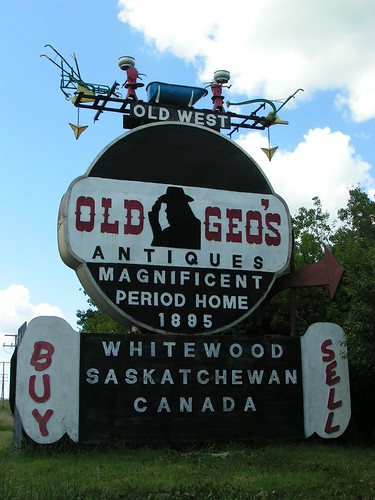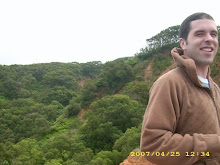
Writers throughout history have foreseen the apocalypse in many forms. The coming of the Four Horseman was a popular image during the Middle Ages. During the Cold War, nuclear annihilation was the popular vision of the end of humanity. In more recent times, hordes of zombies have signalled the end of the world in both print and film. Douglas Coupland has a much more pragmatic idea of how the apocalypse will descend on Earth. In Player One: What Is to Become of Us, Coupland portrays the world coming to an end when the world hits a state of “peak oil”. The price of oil rises to $250 per barrel and all hell brakes loose.
Coupland's alternative take on the apocalypse should not come as a surprise to anyone familiar with his work. The author, who the London Daily Telegraph described as “one of the greatest satirists of consumerism”, has made a career breaking the literary mold. He's been a trendsetter of post-modern literature since his first novel, Generation X: Tales for an Accelerated Culture was published in 1991. That novel coined the terms “McJob” and “Generation X”, implanting both in the popular culture lexicon. Coupland's 2006 novel, Jpod, deconstructed the lives of adults living in the modern, digital culture. Player One continues Coupland's constant examination of culture, with an exploration of human identity and religion thrown in for good measure.
The novel was written as the 2010 submission for the prestigious Massey Lecture Series. In the past, such dignitaries as Martin Luther King Jr., Noam Chomsky, and Michael Ignatieff have been Massey Lecturers. Coupland presented Player One as five one-hour lectures on CBC Radio, earlier this November. The novel was also on the long list for the prestigious ScotiaBank Giller Prize.
Player One begins in a very banal manner. Four strangers converge on a dingy, second-rate hotel bar, on the outskirts of a Toronto airport. There's Rick, a recovering alcoholic working as a bartender. Rick has lost everything in his life thanks to his addiction and is waiting for a visitor to come and bring him all the spiritual enlightenment that $8,500 will buy. Karen, a single mother from Winnipeg, has flown all the way to Toronto to meet a man she met in an online “Peak Oil” chat room. Luke has made his way to Toronto from a small town in Northern Ontario. A preacher who has lost his faith, Luke is on the run with $20,000 he stole from his church's renovation fund. The fourth stranger is Rachel, a beautiful blond teenager with a flaw that prevents her from being human. She has come to the bar in an attempt to find a man for reproduction, in order to show her father that she is not an uncaring robot. All four of these characters come to this bland, poorly lit lounge.
Watching over this motley group is the mysterious Player One, a disembodied voice that provides a fifth perspective on the events of the novel. Player One is Rachel's online alter-ego, her avatar from the online simulation Second Life. This alter-ego represents Rachel, free of the limitations of the conditions of her autism. Player One's voice acts as Rachel's second viewpoint on the events that are taking place in the lounge.
When the price of oil hits $250 per barrel, chaos envelops the world outside the bar and slowly the realization that the world is coming to an end sinks into the four desperate souls on the inside. As madness and death invade the bar, in both human and chemical form, Rick, Karen, Luke, and Rachel are left to contemplate the meaning of life and their place in the world. They question their religion, if there is an afterlife, and the basic tenets of society, as the world comes crashing down around them.
The problem with Player One is that the discussions on deep emotional and human issues that take place between the characters comes off as extremely hollow. Their conversations and thoughts do not seem believable in the context of their characters, but are more obviously the transparent thought process of the author. A prime example is Luke's thoughts about where society has evolved to and where it has to go from there. “What are we evolving toward? Do we just go along, day by day, drinking coffee, building golf courses, making photocopies, and having wars until we all mutate and turn into a new species? How long are we supposed to keep on doing all this stuff we do?”
Coupland has been railing against the modern consumer society in the majority of his novels, beginning with Generation X: Tales for an Accelerated Culture. By this point it has become sort of cliched. Reading this passage, it is tough to see these thoughts as being those of the character and not the rantings of an author who has been hammering home the same point for almost 20 years.
Another issue that Coupland cannot overcome is his use of the titular character. Player One is intended to give an objective view of the events that are shaping the novel, but instead it just reiterates what the other characters are thinking and doing. It's a totally unecessary plot device that does not further the plot and adds little to the theme of the story. Coupland makes use of Player One in the denouement of the story, after things go to hell in the bar, just like they have in the outside world. His use of the Player One to tie up the stories loose end and provide a “happy ending” to the story seems contrived and pointless.
Coupland closes up Player One with a glossary of terms that will be used in the post-apocalyptic world. While the “Future Legend” is interesting and quite humourous, it lacks connection with the rest of the story. It almost seems like Coupland had written this glossary and then decided, “Hey, I've got this interesting piece of writing, why don't I write a novel to go along with it?”
Player One: What Is to Become of Us will interest anyone who is familiar with Coupland's previous efforts. For those who have never picked up one of his novels before, start with Generation X: Tales for an Accelerated Culture. You'll be much more satisfied with your decision.
















